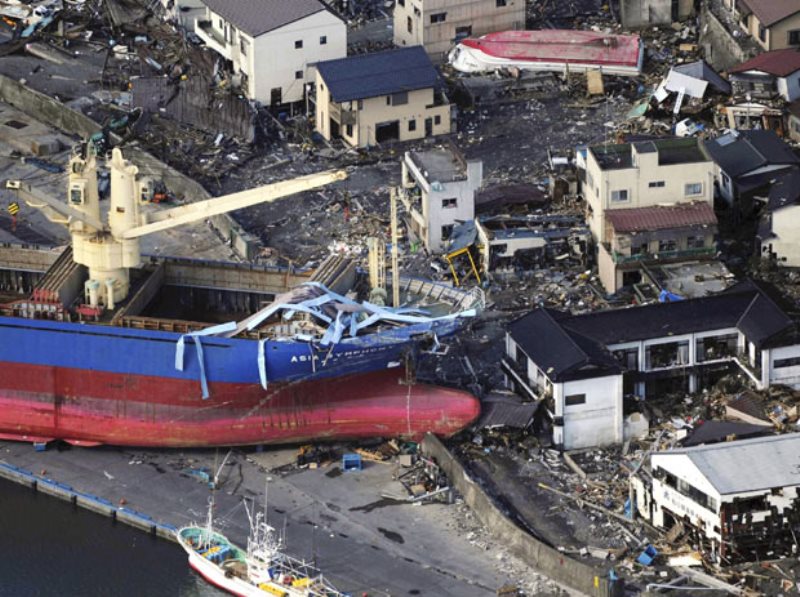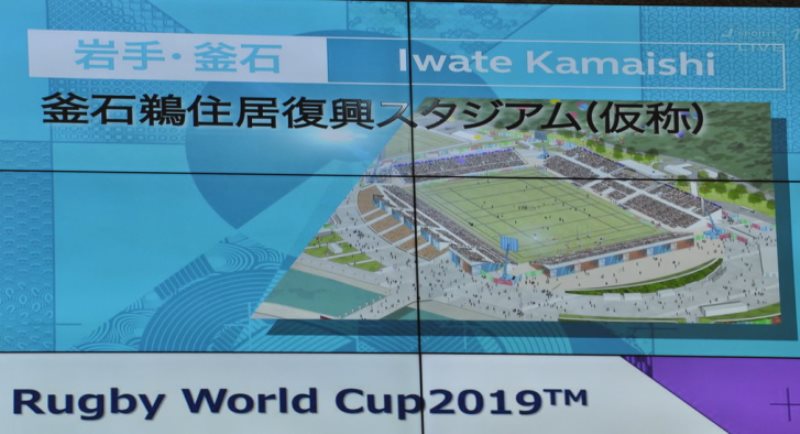
When the Rugby World Cup comes to the small northern Japanese town of Kamaishi in just over a year, it will stir emotions far beyond the pitch.
This former mining town with a proud rugby tradition was one of the areas hardest-hit by the 2011 tsunami, losing more than 1,000 people and suffering widespread devastation.
Rising from the wreckage is the Rugby World Cup’s only purpose-built stadium, a 6,000-seater venue unveiled Sunday that locals see as a powerful and defiant symbol of hope, resilience and recovery.
Sometimes dubbed Japan’s “rugby town” or the “Wales of Japan” for its mining and rugby links, the town of 34,000 people turned to the oval ball to pull the community together after the disaster.
In the early 1980s the local club, Nippon Steel Kamaishi RFC, carried all before them — winning seven consecutive national titles and earning the nickname “the Northern Iron Men”.
This team disbanded but in its place came the Kamaishi Seawaves. Locals rallied round the club and urged them to return to the pitch as soon as possible after the March 11, 2011 tsunami.
Former Seawaves scrum-half Takeshi Nagata said winning the right to host two World Cup games would enable the town to repay the support it received from abroad and show it has risen from the wreckage.
“At the time of the disaster, we had such a huge amount of support from outside and from overseas. So we are really keen to show everyone that we are doing well and we have recovered,” said the 35-year-old.
– Just run. Run uphill –
Memories of the tsunami are never far from sight, even at the brand-new Kamaishi Unosumai Memorial Stadium.
Just a few hundred metres from the goalposts, workers are reconstructing sea defences and two new evacuation routes snake into the hills just beyond one try line.
Reminders of the carnage suffered by this town are everywhere, from road signs declaring where the waters reached to a poignant memorial with an inscription: “Just run. Run uphill … And tell future generations that a tsunami reached this point.”
Innkeeper Akiko Iwasaki did just that and is now telling her story to future generations.
When the earthquake struck, the 62-year-old remembered what her grandmother had told her as a child. “Climb! Get uphill!”
So that’s what she did, even though she admits she might probably have been safer on the top floor of her ryokan (Japanese inn), which directly faces the ocean.
She had barely emerged into the car park when she was engulfed by a wall of water which swept cars and a minibus along with it, in harrowing scenes captured on video by chance by a guest.
Miraculously she survived, ending up wedged between the minibus and the back wall of the inn.
“We used to have a beautiful white-sand swimming beach. We lost our beach and nearly all the buildings were destroyed,” recalls the energetic innkeeper, her eyes scrunched up with the pain of the memories.
Iwasaki’s inn was rebuilt partly by foreign volunteers. She sees the World Cup as a chance to repay that generosity, urging fans to come to enjoy Kamaishi’s spectacular mountain and ocean scenery as well as its famous seafood.
“For us, the World Cup gives a sense of hope but also a door to the future. We really wanted to host the World Cup to give hope to the children.”
– ‘Great alcohol’ –
The stadium, whose capacity will swell to 16,000 when temporary stands are added for the World Cup matches, was built on the site of two local schools completely flooded in the tsunami.
More than 400 children ranging from six to 15 escaped the water, racing some two kilometres into the mountains.
Staging World Cup games in a disaster-hit area like Kamaishi is part of a wider push to drive tourism to the battered region, which will also see baseball matches hosted in Fukushima during the 2020 Tokyo Olympics.
Kamaishi will host the pool D match between Fiji and Uruguay on September 25 next year, and a fixture on October 13 between Namibia and another team yet to be decided.
Sunday’s opening match saw the Seawaves lose 29-24 to Japanese Top League side Yamaha Jubilo in front of a capacity crowd.
Yamaha player Ayumu Goromaru, one of the stars in Japan’s historic 2015 World Cup win over South Africa, recalled that his team came to play in Kamaishi only two weeks after the tsunami.
“Being here today was really important to us,” he said.
Officials are confident the stadium will be packed out and former player Nagata knows what might attract travelling rugby fans.
“We have great alcohol here,” he says with a grin. – Agence France-Presse

































